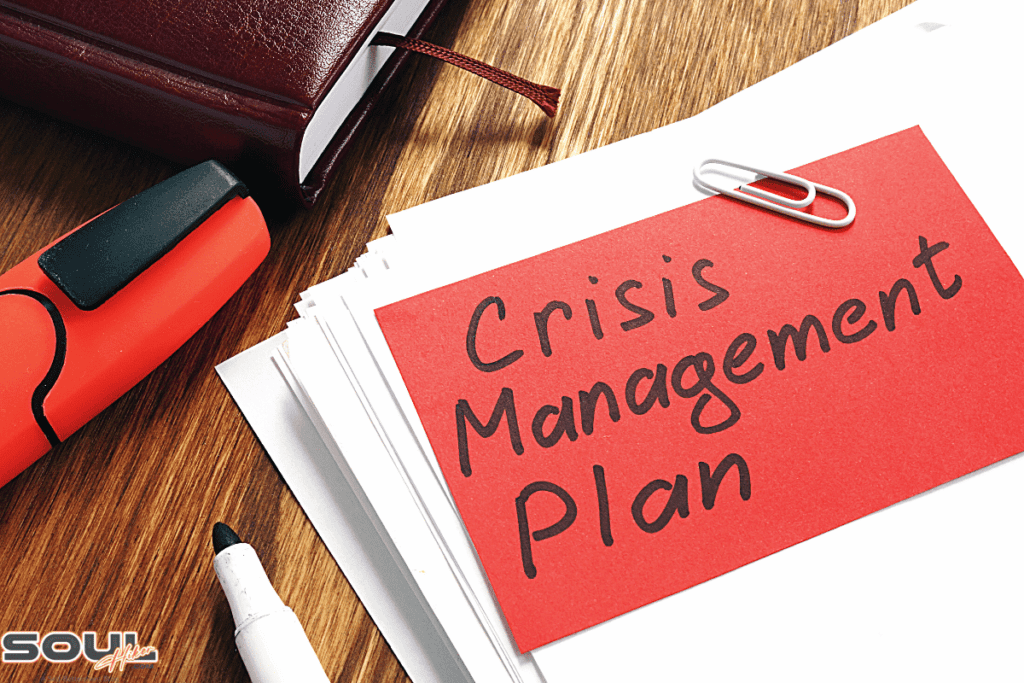Going through a life crisis is often perceived as a daunting and negative experience, but it can actually be a catalyst for profound personal growth and positive change. During such periods of upheaval, individuals are compelled to reevaluate their life choices, priorities, and values, leading to a deeper understanding of themselves. This introspective journey can uncover hidden strengths and new passions, paving the way for a more fulfilling and purposeful life. Embracing the challenges of a mid life crisis for men or women can ultimately transform them into an opportunity for self-discovery and renewal, highlighting its potential to be a significantly positive turning point
Table of Contents
What Is A Mid-Life Crisis?
A midlife crisis is a period of emotional turmoil and identity questioning that typically occurs in middle adulthood, around the ages of 40 to 60. It is often triggered by reflections on mortality, achievements, and the passage of time, leading to feelings of dissatisfaction, restlessness, and a desire for change.
Individuals experiencing a midlife crisis may question their life choices, career paths, and relationships, and may feel a strong urge to make significant life changes in pursuit of happiness, fulfillment, or a sense of purpose. This period can involve reevaluating goals, values, and personal identity, often leading to transformative life decisions and actions.
The Positive Aspects of a Mid-Life Crisis

Going through a midlife crisis can have positive aspects and potentially lead to significant personal growth and improvement in quality of life. Here are some of the positive outcomes that can arise from experiencing a midlife crisis.
1. Self-Reflection and Awareness
A midlife crisis triggers deep self-reflection, leading individuals to question their life choices, achievements, and future goals. This period of introspection can enhance self-awareness, helping people understand their true desires and values.
It provides an opportunity to reassess life’s direction and make adjustments that align with one’s authentic self. Ultimately, this heightened awareness can pave the way for more intentional and satisfying life decisions.
2. Catalyst for Change
The emotional turmoil of a midlife crisis often serves as a catalyst for significant life changes. It pushes individuals to step out of their comfort zones and make bold decisions, such as changing careers, relocating, or starting new ventures.
This period can lead to the pursuit of long-neglected passions or the adoption of healthier lifestyles. As a result, individuals can experience renewed vitality and a sense of purpose.
3. Renewed Goals and Priorities
During a midlife crisis, individuals commonly reevaluate their goals and priorities, leading to a clearer vision of what they want from life. This reassessment can result in setting new, more fulfilling objectives that better reflect personal values and aspirations. The process encourages a shift towards prioritizing personal well-being, relationships, and meaningful activities. Consequently, life becomes more aligned with personal definitions of success and happiness.
4. Improved Relationships
The introspective nature of a midlife crisis can lead to improved relationships with family, friends, and partners. Individuals often become more conscious of the value of these relationships and may work to strengthen and deepen connections. Communication can improve, leading to more meaningful and satisfying interactions. The experience can also foster empathy and understanding, enhancing the quality of personal relationships.
5. Empowerment and Confidence
Navigating through a midlife crisis can result in increased self-confidence and a sense of empowerment. Overcoming the challenges and making conscious life changes can make individuals feel more in control of their destiny. This empowerment fosters a belief in one’s ability to effect change and make positive life choices. As a result, individuals may approach life with greater confidence and determination.
6. Legacy and Contribution
A midlife crisis often prompts thoughts about one’s legacy and the impact they wish to have on the world. This can lead to a heightened focus on altruism, community involvement, and mentorship. Individuals may pursue activities that contribute positively to society, enriching their sense of purpose and fulfillment. Establishing a meaningful legacy becomes a powerful motivator for living a life that aligns with one’s values and aspirations.
7. Appreciation for Life
Facing the reality of mortality during a midlife crisis can lead to a greater appreciation for life. This awareness can encourage individuals to live more fully, embracing each moment and pursuing happiness and contentment. There is often a renewed focus on enjoying the present, cultivating gratitude, and cherishing the simple pleasures in life. Ultimately, this leads to a more joyful, fulfilling, and meaningful existence.
What Age Is a Midlife Crisis For a Man?
The age at which a man might experience a midlife crisis can vary widely, but it is commonly thought to occur between the ages of 45 and 65. This period is often characterized by a time of introspection, reevaluation of life choices, and sometimes significant lifestyle changes as individuals confront their own aging, mortality, and unfulfilled aspirations.
However, it’s important to note that not everyone experiences a midlife crisis, and the timing and expression of these feelings can differ greatly from person to person.
What is a Mid-life Crisis For a Man Like?
The duration of a midlife crisis can vary greatly among individuals and depends on various factors, such as personal circumstances, the nature of the crisis, and how one manages it. For men, it’s important to note that the length and intensity of the experience can differ widely.
The process of navigating through a midlife crisis involves reevaluating life goals, making significant life changes, and adapting to new perspectives, which can take time. The duration is also influenced by the individual’s ability to cope with change, the support system they have, and the specific challenges they face during this period.
In essence, a midlife crisis is a highly personal experience, and its timeline can vary significantly from one person to another. Some may navigate through it relatively quickly, while others may take longer to find new balance and fulfillment.
What Age Is A Midlife Crisis For A Woman?

For women, a midlife crisis typically occurs between the ages of 40 and 55. Similar to men, this period can be marked by introspection, life reassessment, and emotional transitions. Factors such as career, family responsibilities, and physical changes like menopause can influence the timing and experience of a midlife crisis. However, like with men, the exact age and experience can vary greatly from person to person, and not all women go through a midlife crisis.
How to Get Through a Midlife Crisis
To navigate a midlife crisis effectively, start by acknowledging and accepting your feelings without judgment. Seek support from friends, family, or professionals to gain perspective and guidance. Reflect on your life and goals, identifying what truly matters to you and what changes can enhance your fulfillment.
Set realistic, achievable goals and take incremental steps towards them, celebrating progress along the way. Embrace change and be open to new experiences, whether in your career, hobbies, or personal life. Focus on aspects of your life you can control and take positive actions towards improvement. Prioritize self-care by engaging in activities that nurture your physical, mental, and emotional well-being.
Cultivate and invest in positive relationships that offer support and joy. Maintain a sense of humor to help cope with challenges, using laughter as a stress reliever. Finally, be patient with yourself, recognizing that personal growth and adaptation are gradual processes.
